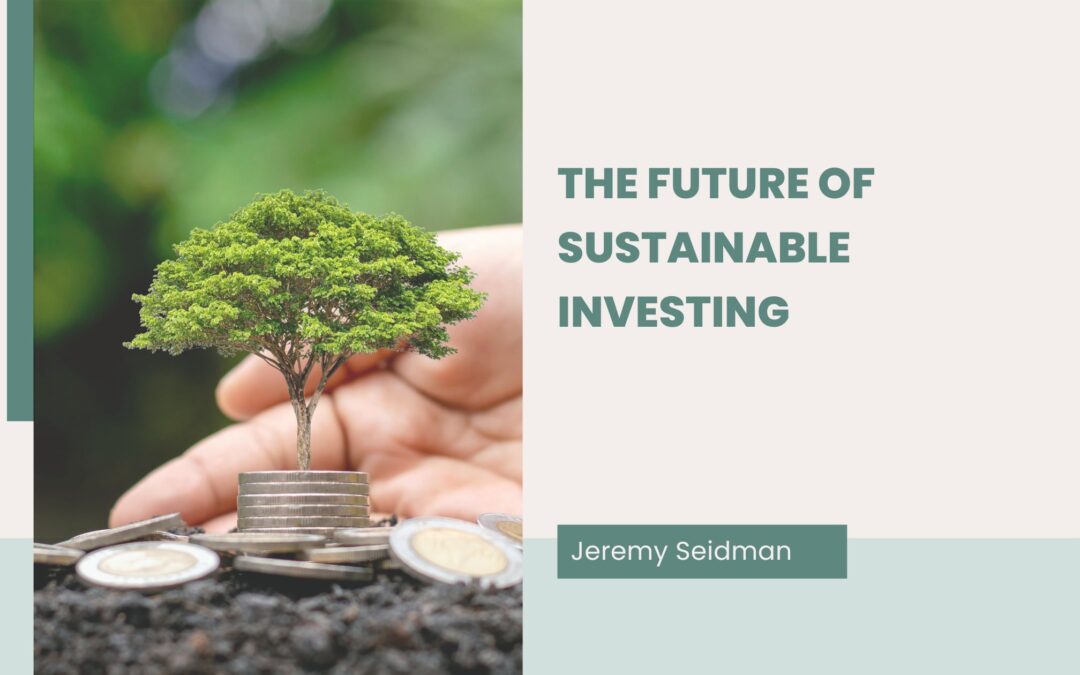Sustainable investing, once considered a niche market, has grown exponentially over the past decade and is rapidly becoming a mainstream investment strategy. Investors are increasingly aware of the long-term environmental, social, and governance (ESG) factors that can influence the performance of their investments. As the world faces mounting challenges such as climate change, social inequality, and corporate governance issues, sustainable investing presents a way to generate financial returns while promoting positive change. The future of sustainable investing looks promising, with innovation, regulation, and consumer demand driving its evolution.
- The Growing Demand for ESG Investments
One of the primary drivers behind the future of sustainable investing is the growing demand from investors for ESG-conscious portfolios. Millennials and Generation Z, in particular, are pushing for a greater focus on sustainability, as these younger generations are more socially and environmentally conscious. Studies show that a significant portion of younger investors are willing to sacrifice some financial return for investments that align with their values, particularly in areas such as environmental sustainability, social justice, and corporate ethics.
As a result, asset managers and financial institutions are increasingly integrating ESG factors into their investment strategies to meet this demand. According to recent reports, sustainable investing assets are projected to reach trillions of dollars in the coming years, signaling a shift from traditional investment models to more responsible and impact-driven approaches. The rise of ESG-focused mutual funds, exchange-traded funds (ETFs), and impact investment vehicles suggests that sustainable investing is poised for long-term growth.
- Advances in ESG Data and Technology
One of the challenges of sustainable investing has been the lack of standardized, reliable data on ESG factors. Investors and asset managers have often faced difficulties in evaluating companies’ sustainability performance due to inconsistent reporting practices. However, advancements in technology, data analytics, and artificial intelligence (AI) are beginning to address these issues.
Machine learning and AI algorithms are increasingly being used to analyze large datasets and assess ESG risks and opportunities. For example, AI can sift through unstructured data such as news articles, social media posts, and regulatory filings to identify companies’ ESG practices and evaluate their impact on long-term performance. These technologies can help investors make more informed decisions, creating a more transparent and efficient market for sustainable investments.
Additionally, the development of standardized ESG metrics and frameworks, such as the Global Reporting Initiative (GRI) and the Sustainability Accounting Standards Board (SASB), will improve the comparability and accuracy of ESG data, enabling investors to make better-informed choices.
- Regulatory Support and Global Standards
As the demand for sustainable investing continues to grow, governments and regulatory bodies around the world are taking steps to establish clearer guidelines and frameworks for ESG investing. In the European Union, for example, the Sustainable Finance Disclosure Regulation (SFDR) requires financial institutions to disclose how they integrate ESG factors into their investment processes. The U.S. Securities and Exchange Commission (SEC) is also considering more stringent rules on climate-related disclosures, signaling that regulatory oversight on ESG matters will continue to tighten.
These regulatory developments will increase transparency and encourage companies to adopt more sustainable business practices, as they will be required to report on their ESG performance more rigorously. As regulations evolve, investors will have greater confidence in the integrity of ESG data, further driving the adoption of sustainable investing.
- Integration of Climate Change into Investment Strategies
The issue of climate change is central to sustainable investing, and its importance is only expected to grow in the future. The financial risks associated with climate change—such as extreme weather events, rising sea levels, and resource scarcity—are becoming increasingly apparent to investors. Asset managers are now incorporating climate risk assessments into their investment strategies, considering how companies and industries are adapting to or mitigating the effects of climate change.
One major trend is the shift toward “green” and low-carbon investments. Investors are actively seeking opportunities in renewable energy, clean technology, and energy-efficient industries, while divesting from fossil fuels and companies with poor environmental track records. The rise of green bonds, which are specifically issued to finance environmentally sustainable projects, is a prime example of how investors are prioritizing climate-conscious investments.
As governments implement more aggressive climate policies and businesses adopt greener practices, the opportunities for sustainable investment in climate-focused sectors will continue to expand, creating a strong growth trajectory for sustainable investing.
- Impact Investing and Social Justice
Sustainable investing is not just about environmental sustainability; it also encompasses social issues such as diversity, equity, and inclusion. The future of sustainable investing will likely see a greater emphasis on social justice and the need for investors to consider the broader societal impact of their investments. Impact investing, which seeks to generate both financial returns and measurable social or environmental benefits, is expected to grow significantly in the coming years.
Investors are increasingly seeking to support companies and organizations that prioritize social equity, human rights, and community development. For example, investing in affordable housing, education, or healthcare initiatives can have a direct positive impact on underserved populations, while still offering a financial return.
The future of sustainable investing is bright, with continued growth driven by changing investor preferences, technological advances, regulatory support, and a growing awareness of the importance of addressing global challenges. As the market for sustainable investments expands, it will become more accessible, transparent, and impactful. By aligning financial goals with positive environmental and social outcomes, sustainable investing is poised to redefine how we think about returns, helping to create a more sustainable and equitable future for generations to come.
